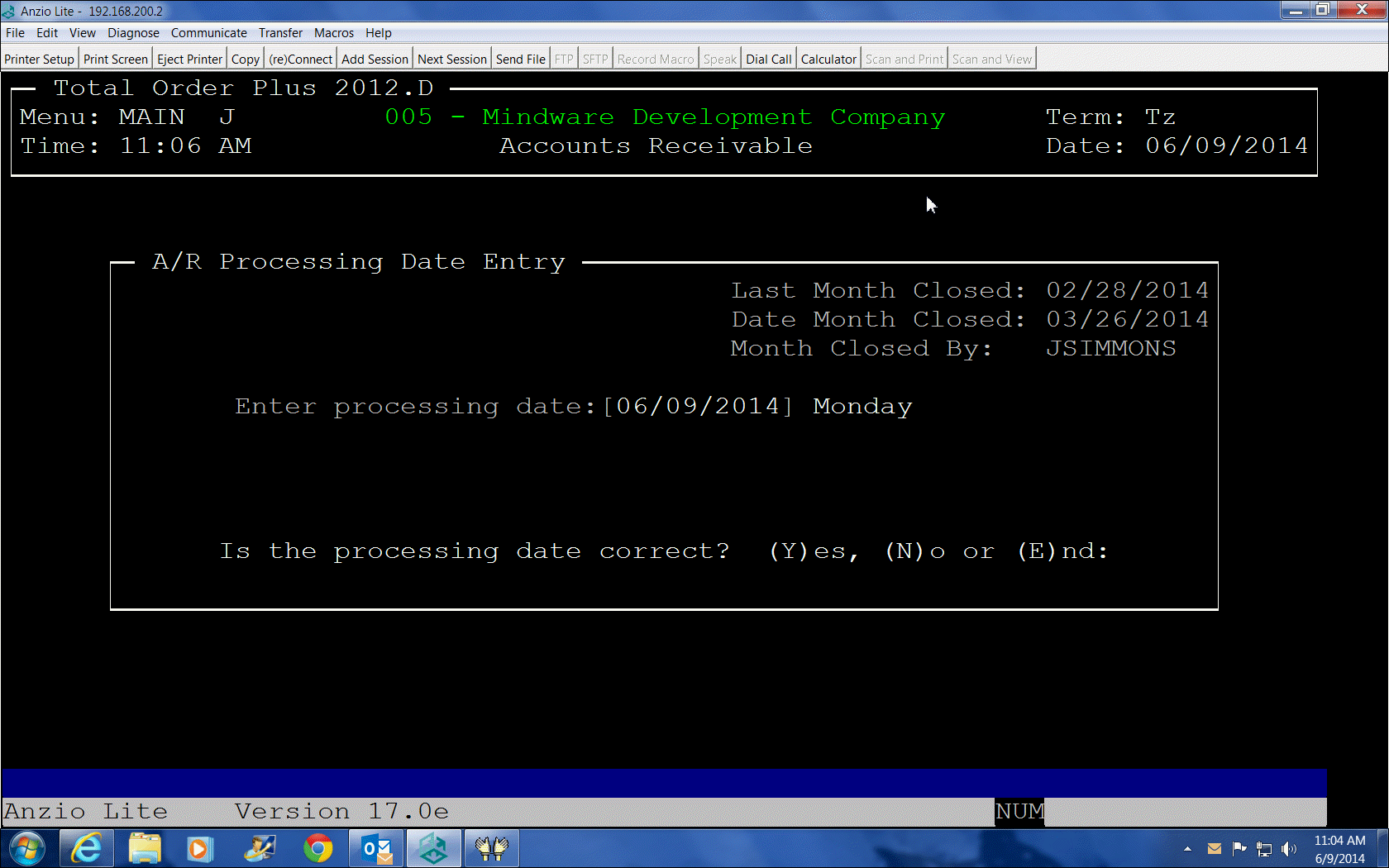There are times when a user is working in Total Order Plus and for whatever reason finds themselves being kicked out of TOP. When this happens, there are files left open that will prohibit you from logging back in and returning to your original input. This can also cause ‘Error 0 – File Device/Record Busy or Inaccessible’ message.
Instead of trying to track which files were open, it is easier to cancel the user processes which will allow the user to enter the same application and close any open files associated with that user.
To cancel an active user process on your system, you must enter the following commands:
Login: root
Password: xxxxxx (ask system supervisor)
Type in the who command to see what users are logged in:
# who
You can view a list of all active users with their TTY, Date and Time of login and the process they are running.
Notes:
On Red Hat Linux servers, it will also display the IP address of each user.
To view a list of all active processes:
# ps -a
You will be able to see the PID number, the TTY, Time of login and the active process for each user.
To view a list of active processes for just one specific user:
# ps -t ttyxx
The processes for each user is listed on the screen. You must decide what PID number
you want to cancel and what process to cancel for that tty. There are usually multiple
processes running for one user. The process to cancel for Total Order Plus will always
be the Business Basic process (Pro5). You will need that process identification number (PID).
With this information you can enter this command:
# kill -9 11049 (PID number for BBx)
The system will display a prompt telling you the print job has been cancelled.
To return to the login prompt, type:
# exit


